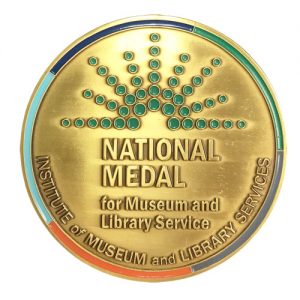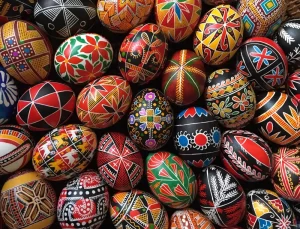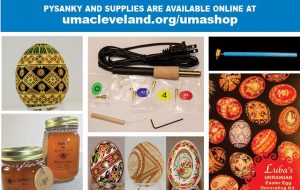The UMA houses a sophisticated collection of cultural artifacts that are representative of Ukrainian artistic achievements, as well as a collection of unique and original historical documents from Ukraine and from numerous Ukrainian American immigrant communities worldwide. During the past 50 years, the UMA has assembled an astonishingly rich and diverse collection with thousands of rare and unique items, among them:
- a permanent collection of artwork and a sculpture by the world renowned 20th century artist and sculptor Alexander Archipenko;
- a collection of paintings, lithographs, sculptures, ceramics, textiles, Easter eggs (pysanky), folk instruments;
- more than 1,000 posters;
- thousands of photographs that depict life in Ukraine and in Ukrainian immigrant communities throughout the world, including a large number from the Cleveland area community;
- more than 4,000 postcards from Ukraine and Ukrainian diaspora;
- a phonograph record collection with 3,000 records that date to the 1910s;
- an archive and library with over 20,000 books printed in Ukrainian, English and other languages or about Ukrainian topics published on five continents, from the 17th century to the present;
- more than 2,000 periodicals that date from the late 19th century;
- a year-by-year compilation of the life of the Cleveland Ukrainian community starting in the 1910s that includes thousands of handouts, photographs, programs, and other documents;
- original religious records beginning with the 17th century to the present from the Orthodox, Catholic and Protestant Churches, elements of Judaica, and artifacts that document the practices of paganism and atheism in Ukraine;
- a complete collection of weekly television programs that were broadcast into Ukraine beginning in 1993 by Voice of America, a U.S. government agency, that were given to the UMA as a result of an Act of Congress;
- currency, coins and postage stamps from 1917 to the present;
- primary source materials: minutes, ledgers, personal accounts, letters, etc.; and a
- comprehensive video documentation of the extensive Ukrainian folk art collection, including costumes, embroidery and pottery, of a collector in Michigan.
Ukrainian Art
The UMA features an impressive and eclectic collection of Ukrainian art, including:
- Easter eggs – “pysanky”
- embroidery
- woven textiles
- traditional apparel (folk costume) and related accessories
- woodcarving
- ceramics
- works of fine art by world-renowned Ukrainian artists such as Alexander Archipenko, the Krychevsky Family, Lydia Bodnar-Balahutrak, and Jacques Hnizdovsky, Mykhailo Chereshnovsky
Dmohovsky Photographs
Dr. Stephan Dmohovsky, a military physician in the Austrian army and a pioneer in what was then the new field of photography, compiled an album of photographs taken from 1906 – 1914. The entire album is available to be viewed at the UMA, please see our online exhibit to view a select group of images… [Enter Exhibit]
Hnatiuk Collection
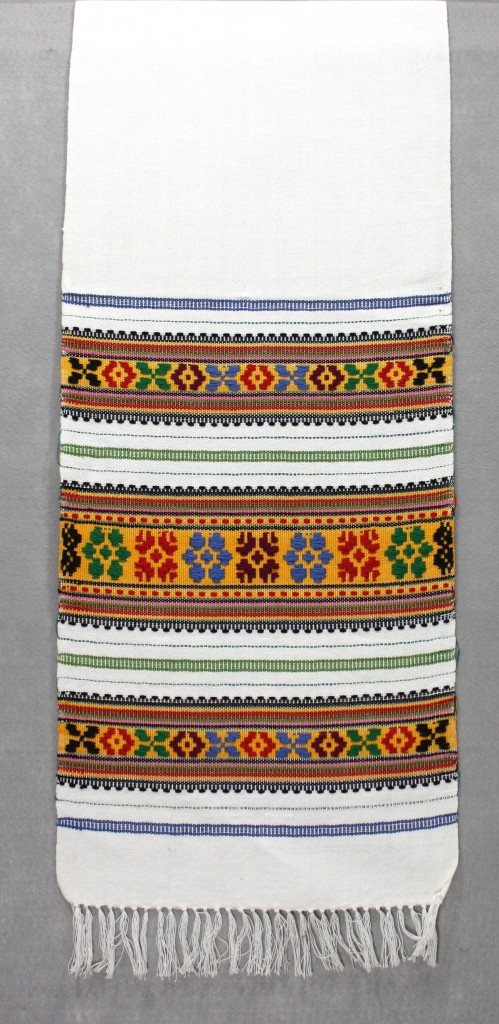
The Hnatiuk family began collecting textiles, ceramics, woodcraft, and other collectibles and donated this large collection to the UMA in 2009.
Ukrainian Easter Eggs – Pysanky – Online Exhibit
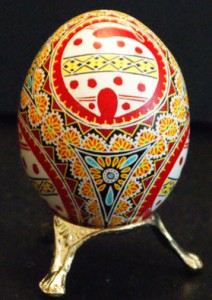
The Ukrainian Easter-egg, known in Ukrainian as “pysanka” (singular; from the Ukrainian verb “pysaty”, meaning “to write”), is one of the most interesting and most unique forms of Ukrainian decorative art. Its history dates back to the distant past of the Ukrainian people and is connected with the pagan ritual of praising the coming of Spring. …. [ENTER EXHIBIT]
Displaced Persons Camp Exhibit

The exhibit commemorates the 60th anniversary of The Displaced Persons Commission Act signed by President Harry S. Truman on June 25, 1948. More than 100,000 Ukrainians benefited from this act of the 80th Congress of the United States when they immigrated to the United States. During four years of its existence, the Commission created by this act was able to process, transport, and provide visas…. [ENTER EXHIBIT]
Plast Ukrainian Scout Organization
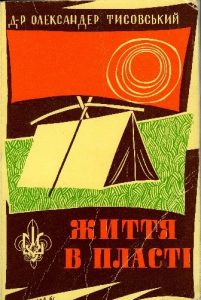
About Plast and its connection to the UMA [ENTER EXHIBIT]
Dr. Oleksander Tysovskyj, DROT, UMA Collection [ENTER EXHIBIT]
Plast Postcard UMA Collection [ENTER EXHIBIT]
Plast other materials [ENTER EXHIBIT]
87th Anniversary of the Holodomor Genocide in Ukraine

A Virtual Exhibition Presentation commemorating the 87-year anniversary of the Holodomor Famine-Genocide, which occurred in Ukraine in 1932-33.
November 2020
Art by Lydia Bodnar-Balahutrak
Houston, Texas
Holodomor means murder by starvation and is the word used to describe the horror inflicted by Stalin and his government officials on men, women, and children in a deliberate political policy of extermination by starvation. The 1932-33 Holodomor claimed millions of lives in Ukraine.
In 1991, the artist traveled to Ukraine for the first time: “My eyes and soul were opened to a land that was beautiful but ravaged by the Soviet regime. The people were long-suffering yet hopeful – the culture was rich but sabotaged. Years of Soviet oppression had left their mark and were visible everywhere. Mass graves were being uncovered, revealing horrific historical events long denied by the Soviet government.” This knowledge of so many innocent victims did not pull her down into despair, but rather created an urgent need to tell their stories – which was also her story.
The virtual exhibition team: Roksolana Karmazyn (Dallas), Chrystia Bryndzia (Houston), Ksenia Rychtycka (Detroit), Anizia Karmazyn (Pittsburgh), and Olya Czerkas (St. Petersburg) worked in collaboration with the artist, who shared 26 works of mixed-media that are striking, compelling and filled with an anguish. “We must look in order to honor the victims and to acknowledge the past so that we can move on,” the artist maintains.
Lydia Bodnar-Balahutrak is on the Studio School Faculty of the Glassell School of Art at the Museum of Fine Arts, Houston. Her works can be found in museums and private collections in the USA and Europe.
The exhibition is being hosted virtually throughout the United States and Canada during November 2020, the month designated to commemorate the Famine-Genocide.
Famine Kobzar Online Exhibit

In 1932-33, Ukraine had bountiful crops of grain, yet the country was gripped by famine – the result of Joseph Stalin’s collectivization policy. In order to force people to give up their land to the state, he ordered an army of Communist Party activists to seize grain and other food from Ukraine’s independent farmers.
Ukrainian Embroidery

Needlework occupies an important place among the various branches of Ukrainian decorative art, and remains to this day one of the most widespread hobbies of women and even some men.
